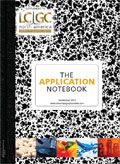A Single-Column Capillary GC Application for the Determination of Benzene in Reformulated Gasoline
The amount of benzene in gasoline is a concern because it is a known human carcinogen, and exposure to it has been linked to detrimental health effects. The challenge with the analysis lies in the complex composition of gasoline, which consists of hundreds of different compounds. Reformulated gasoline also contains additives to produce more complete combustion and subsequent lower emissions of harmful compounds.
The amount of benzene in gasoline is a concern because it is a known human carcinogen, and exposure to it has been linked to detrimental health effects. The challenge with the analysis lies in the complex composition of gasoline, which consists of hundreds of different compounds. Reformulated gasoline also contains additives to produce more complete combustion and subsequent lower emissions of harmful compounds. These additives accomplish this by boosting the oxygen content, and are commonly referred to as "oxygenates." Ethanol is a commonly used oxygenate, often added to a 10% level. Therefore, to measure benzene in reformulated gasoline, it must be resolved from the C5-C12 aliphatic portion, other aromatics, and also ethanol. This typically requires the use of a two-column switching procedure (1).

Figure 1: Reformulated gasoline. Column: SLB-IL111, 60 m à 0.25 mm i.d., 0.20 µm (28928-U), Oven: 50 °C (3 min), 15 °C/min to 265 °C (5 min), Inj. Temp.: 250 °C, Detector: FID, 265 °C, Carrier Gas: helium, 30 cm/s, Injection: 0.5 µL, 200:1 split, Liner: 4 mm i.d., split type, single taper wool packed FocusLiner⢠design, Sample: reformulated gasoline.
Figure 1 shows the analysis of a reformulated gasoline sample on the extremely polar SLB®-IL111 capillary column, which resulted in the elution of benzene after the aliphatic portion, and also resolution of benzene and ethanol. Additionally, the phase stability of the SLB-IL111 column exhibits a stable baseline when subjected to a temperature ramp. Because this column can be used up to 270 °C, it also allows the timely elution of the heavy aromatic constituents in gasoline. These observations indicate that the SLB-IL111 may be an effective alternative to the two-column switching procedure currently required for the determination of benzene and other aromatics in reformulated gasoline. Complete specifications for this column are listed in Table I. Visit sigma-aldrich.com/il-gc to learn more about Supelco ionic liquid GC columns.
SLB is a registered trademark of Sigma-Aldrich Co. LLC
FocusLiner is a trademark of SGE International Pty. Ltd.
Table I: SLB-IL111 specifications
- Application: This extremely polar ionic liquid column was the world's first commercial column to rate over 100 on our GC column polarity scale. As such, it has the most orthogonal selectivity compared to commonly used non-polar and intermediate polar columns, providing increased selectivity for polar and polarizable analytes. Its temperature limit of 270 °C is very impressive for such an extremely polar column. The 60 m version is excellent at resolving benzene and other aromatics in gasoline samples. The 100 m version is suitable for detailed cis/trans FAME isomer analysis, and is a great complementary column to the SP-2560. Launched in 2010.
- USP Code: None
- Phase: Non-bonded; proprietary
- Temp. Limits: 50 °C to 270 °C (isothermal or programmed)
Reference
(1) ASTM D3606, Benzene and Toluene in Unleaded Gasoline and Aviation Fuel.
Sigma-Aldrich/Supelco
595 North Harrison Road, Bellefonte, PA 16823
tel. (800) 359-3041, (814) 359-3041
Website: www.sigma-aldrich.com/analytical

SEC-MALS of Antibody Therapeutics—A Robust Method for In-Depth Sample Characterization
June 1st 2022Monoclonal antibodies (mAbs) are effective therapeutics for cancers, auto-immune diseases, viral infections, and other diseases. Recent developments in antibody therapeutics aim to add more specific binding regions (bi- and multi-specificity) to increase their effectiveness and/or to downsize the molecule to the specific binding regions (for example, scFv or Fab fragment) to achieve better penetration of the tissue. As the molecule gets more complex, the possible high and low molecular weight (H/LMW) impurities become more complex, too. In order to accurately analyze the various species, more advanced detection than ultraviolet (UV) is required to characterize a mAb sample.















